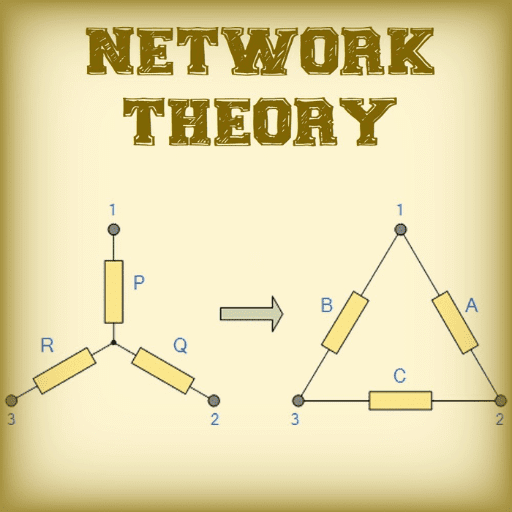Best Study Material for Electronics and Communication Engineering (ECE) Exam
Electronics and Communication Engineering (ECE) Exam > Electronics and Communication Engineering (ECE) Notes > Short Notes for Electronics and Communication > Short Notes: Digital-Communication Systems
Short Notes: Digital-Communication Systems | Short Notes for Electronics and Communication - Electronics and Communication Engineering (ECE) PDF Download
| Download, print and study this document offline |
Please wait while the PDF view is loading
Page 1
Digital Communication
Matched filter:
?
impulse response a(t) =
( T –
t)
. P(t) ?
i/p
?
Matched filter o/p will be max at multiples of ‘T’ . So, sampling @ multiples of ‘T’ will give max SNR
(2
nd
point )
?
matched filter is always causal a(t) = 0 for t < 0
?
Spectrum of o/p signal of matched filter with the matched signal as i/p ie, except for a delay factor ;
proportional to energy spectral density of i/p.
Ø
( )
=
(f) Ø(f) = Ø(f) Ø*(f) e
Ø
( )
= |Ø( )|
e
? o/p signal of matched filter is proportional to shifted version of auto correlation fine of i/p signal
Ø
(t) = R
Ø
(t – T)
At t = T Ø
(T) = R
Ø
(0) ? which proves 2
nd
point
Cauchy-Schwartz in equality :-
|g
(t) g
(t) dt|
= g
(t)
dt |g
(t)|
dt
If g
(t) = c g
(t) then equality holds otherwise ‘<’ holds
Raised Cosine pulses :
P(t) =
(
)
(
)
.
(
)
P(f) =
| | =
cos
| |
=| | =
| |
? Bamdwidth of Raised cosine filter
=
? Bit rate
=
a ? roll o actor
? signal time period
? For Binary PSK
= Q
= Q
=
erfc
.
? 4 PSK
= 2Q
1
Page 2
Digital Communication
Matched filter:
?
impulse response a(t) =
( T –
t)
. P(t) ?
i/p
?
Matched filter o/p will be max at multiples of ‘T’ . So, sampling @ multiples of ‘T’ will give max SNR
(2
nd
point )
?
matched filter is always causal a(t) = 0 for t < 0
?
Spectrum of o/p signal of matched filter with the matched signal as i/p ie, except for a delay factor ;
proportional to energy spectral density of i/p.
Ø
( )
=
(f) Ø(f) = Ø(f) Ø*(f) e
Ø
( )
= |Ø( )|
e
? o/p signal of matched filter is proportional to shifted version of auto correlation fine of i/p signal
Ø
(t) = R
Ø
(t – T)
At t = T Ø
(T) = R
Ø
(0) ? which proves 2
nd
point
Cauchy-Schwartz in equality :-
|g
(t) g
(t) dt|
= g
(t)
dt |g
(t)|
dt
If g
(t) = c g
(t) then equality holds otherwise ‘<’ holds
Raised Cosine pulses :
P(t) =
(
)
(
)
.
(
)
P(f) =
| | =
cos
| |
=| | =
| |
? Bamdwidth of Raised cosine filter
=
? Bit rate
=
a ? roll o actor
? signal time period
? For Binary PSK
= Q
= Q
=
erfc
.
? 4 PSK
= 2Q
1
FSK:-
For BPSK
= Q
= Q
=
erfc
?
All signals have same energy (Const energy modulation )
?
Energy & min distance both can be kept constant while increasing no. of points . But Bandwidth
Compramised.
?
PPM is called as Dual of FSK .
?
For DPSK
=
e
/
? Orthogonal signals require factor of ‘2’ more energy to achieve same
as anti podal signals
? Orthogonal signals are 3 dB poorer than antipodal signals. The 3dB difference is due to distance b/w 2
points.
? For non coherent FSK
=
e
/
? FPSK & 4 QAM both have comparable performance .
? 32 QAM has 7 dB advantage over 32 PSK.
? Bandwidth of Mary PSK =
=
; S =
? Bandwidth of Mary FSK =
=
; S =
? Bandwidth efficiency S =
.
.
? Symbol time
=
log
? Band rate =
Read More
FAQs on Short Notes: Digital-Communication Systems - Short Notes for Electronics and Communication - Electronics and Communication Engineering (ECE)
| 1. What are the key components of a digital communication system? |  |
| 2. What is the purpose of modulation in digital communication systems? |  |
Ans. Modulation is used in digital communication systems to convert digital data into analog signals for transmission over the channel. It allows for efficient use of the channel bandwidth and enables the signal to be transmitted over long distances without significant loss of information.
| 3. How does error detection and correction work in digital communication systems? |  |
Ans. Error detection and correction techniques are used in digital communication systems to ensure the accuracy of transmitted data. Error detection involves adding redundant bits to the data for error checking, while error correction algorithms are used to reconstruct the original data in case of errors during transmission.
| 4. What is the role of multiplexing in digital communication systems? |  |
Ans. Multiplexing is used in digital communication systems to combine multiple signals into a single transmission line. It allows for efficient use of the channel bandwidth by sharing the transmission medium among multiple users or data streams.
| 5. How does digital signal processing enhance the performance of digital communication systems? |  |
Ans. Digital signal processing (DSP) is used in digital communication systems to manipulate and analyze digital signals for improved performance. It enables functions such as filtering, equalization, and signal enhancement to be performed digitally, leading to better signal quality and reliability in the communication system.
Related Searches





























